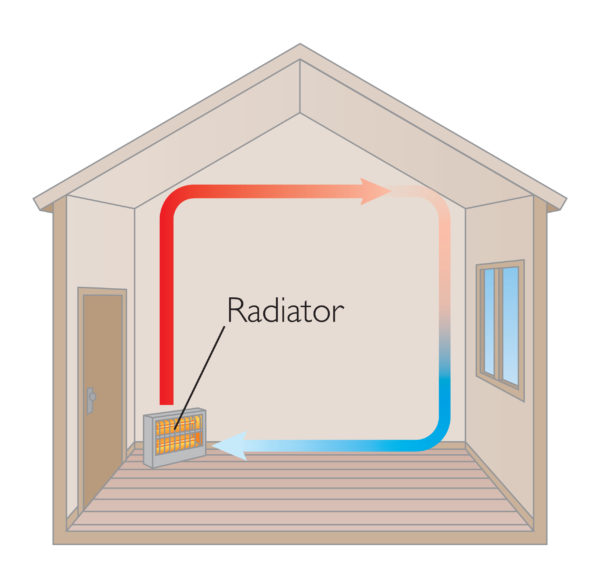Natural Convection in Enclosures — Lesson 5
In this lesson, the focus is on understanding natural convection in enclosures. A very good example of such a scenario is a heater/radiator in a room. You must have noticed that despite the absence of a mechanism to force air movement, such as a fan, the entire room is still warmed up.

This is because of buoyancy-driven air currents that are established as the air is heated in the vicinity of the heater. You can clearly notice this warm air movement when you put your hand near the heater. Mechanical systems such as furnaces, ovens and natural draft cooling towers are other examples where heat transfer through natural convection between the fluid in an enclosed space and the enclosure surfaces at different temperatures is observed. These complex systems can be satisfactorily approximated using simpler configurations such as rectangular cavities to attain a preliminary understanding of the heat transfer. In this lesson, we will discuss the natural convection heat transfer characteristics of three such canonical enclosures: rectangular cavities, concentric cylinders and concentric spheres.
Here are the handouts for this lesson.
